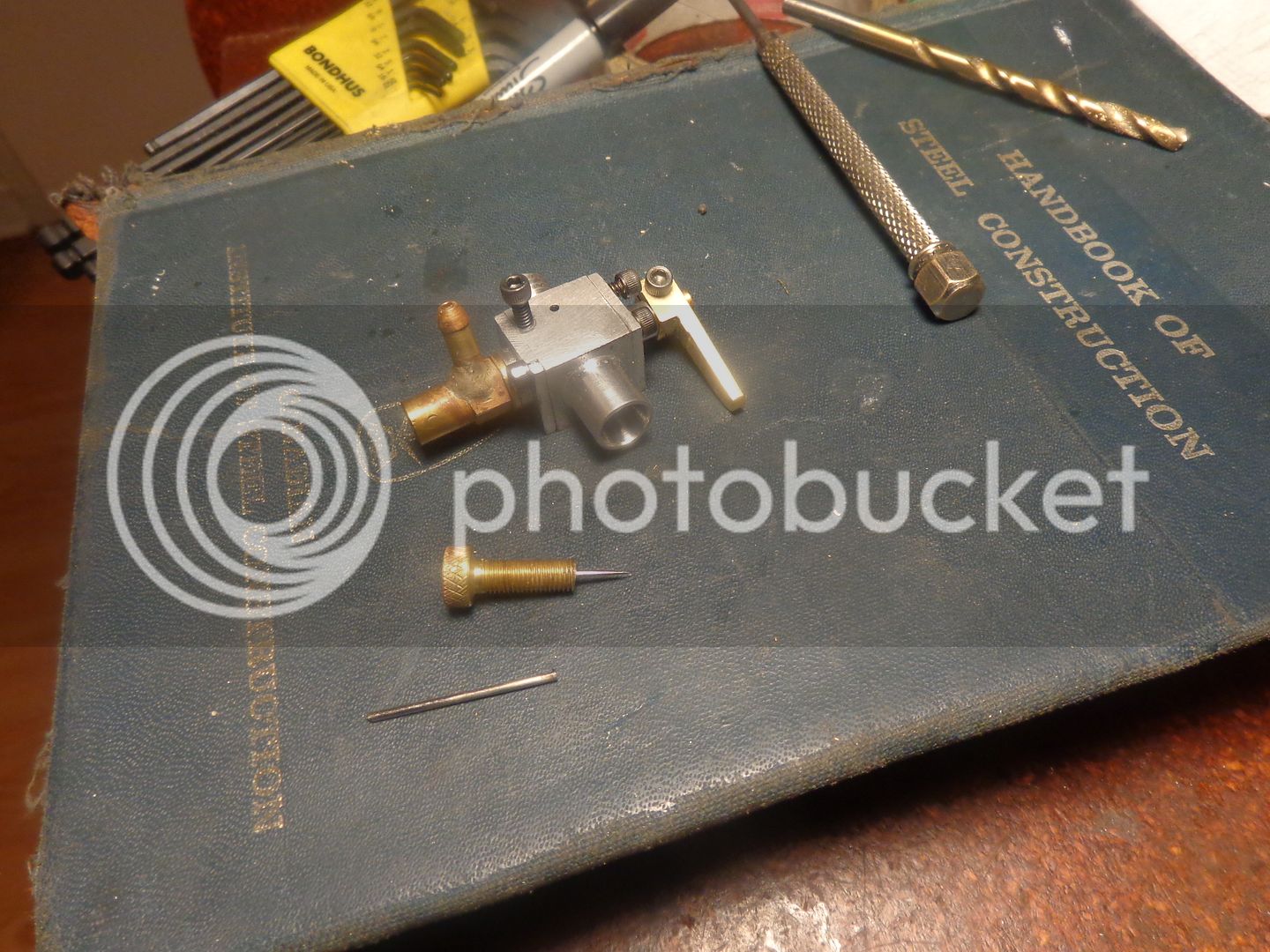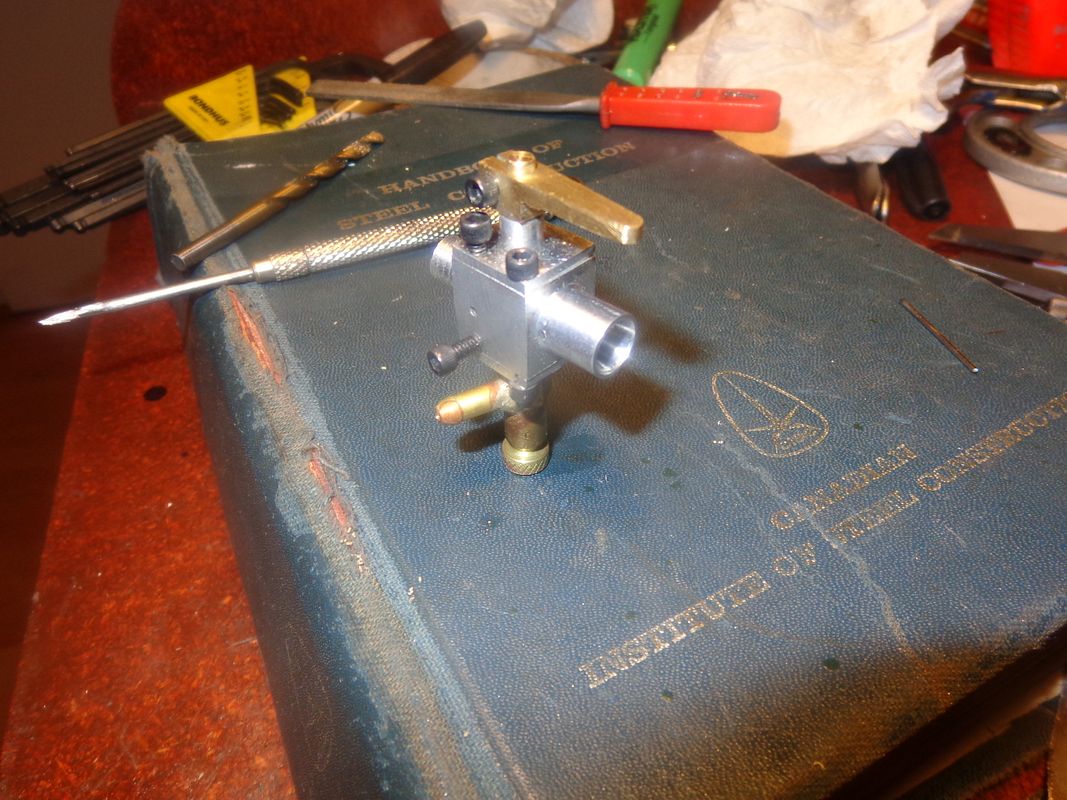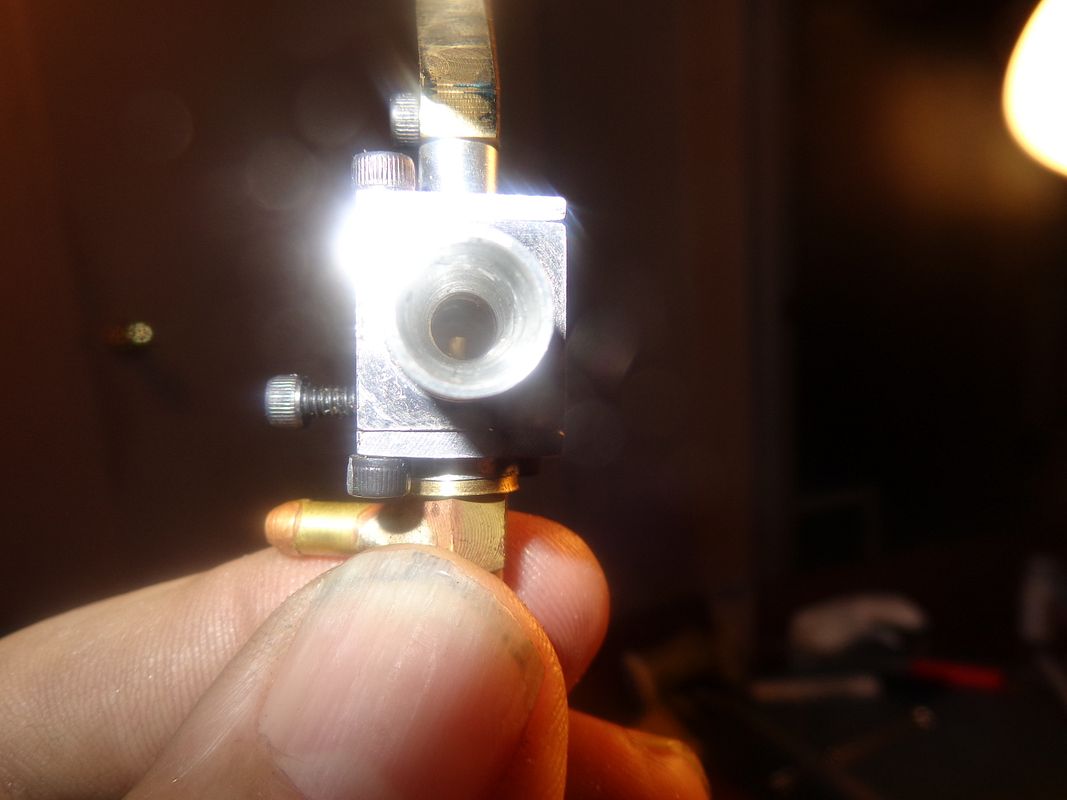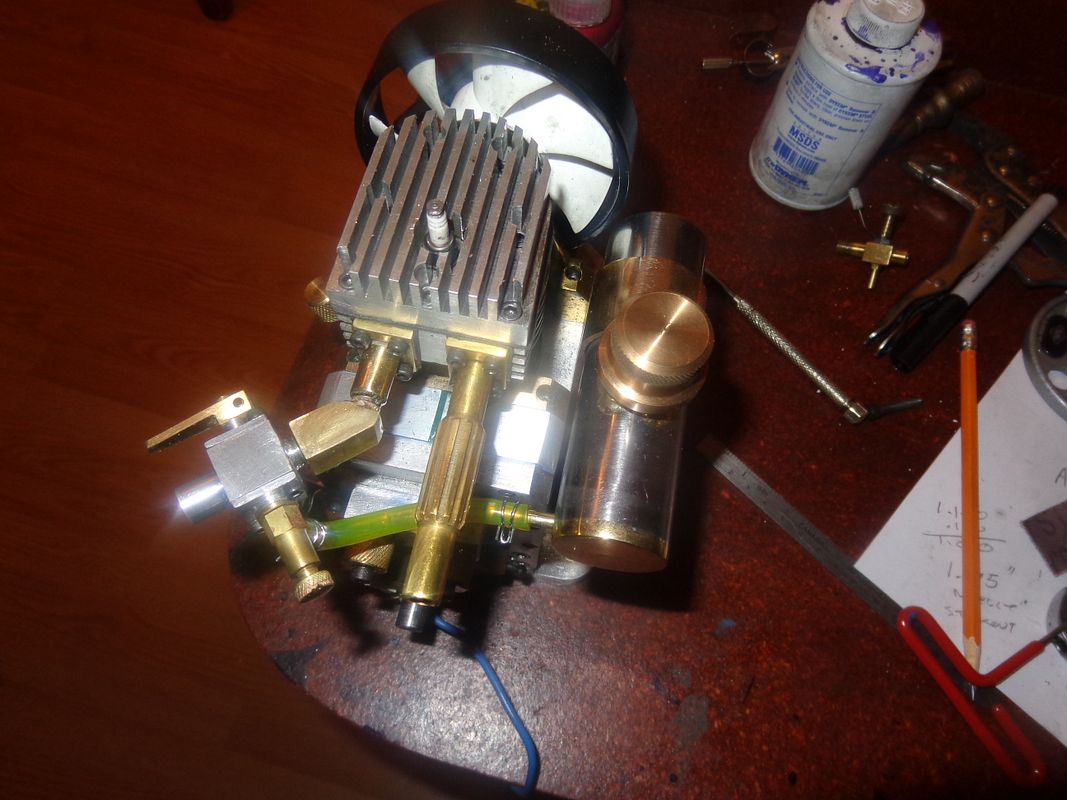We're finished!! Okay, what can I tell you? First, how do I know how long to let the needle stick out past the tip of the brass threaded piece of the needle valve.---Well, I make sure the tip of the needle alone is seated into the hole in the inside end of that tiny 1/16" tube inside. You can tell, because it will go in about 3/16" +/- past the bottom of the hole drilled for the #10-40 threads. Then I slide the threaded brass portion down over top of the needle and screw it into the carburetor body until it absolutely won't go in any farther (finger pressure only). Then back it off two full turns. Measure how much needle sticks out past the back side of the knurled portion. That is the amount that must be cut off the rear piece of the needle. After you have cut it off (I use an abrasive wheel on my air grinder), use fine (220 to 300 grit) emery cloth to sand the last 1/4" close to where you cut it off. Those needles have some kind of clear coating on them that silver solder won't stick to. Then, making sure the needle is fully seated again, set the whole carburetor up in the vice, with the knurled brass bit unscrewed two full turns from "tight closed), and solder it. (It helps to use a countersink tool to put a small crater in the outer end of the brass knurled part for the solder to pool in around the needle). The silver solder will have a tendency to "hump up" when it flows, and you want to be able to grind it down flush on your belt sander, but enough will be left in the crater to hold the needle solidly.













![MeshMagic 3D Free 3D Modeling Software [Download]](https://m.media-amazon.com/images/I/B1U+p8ewjGS._SL500_.png)




















































![DreamPlan Home Design and Landscaping Software Free for Windows [PC Download]](https://m.media-amazon.com/images/I/51kvZH2dVLL._SL500_.jpg)
